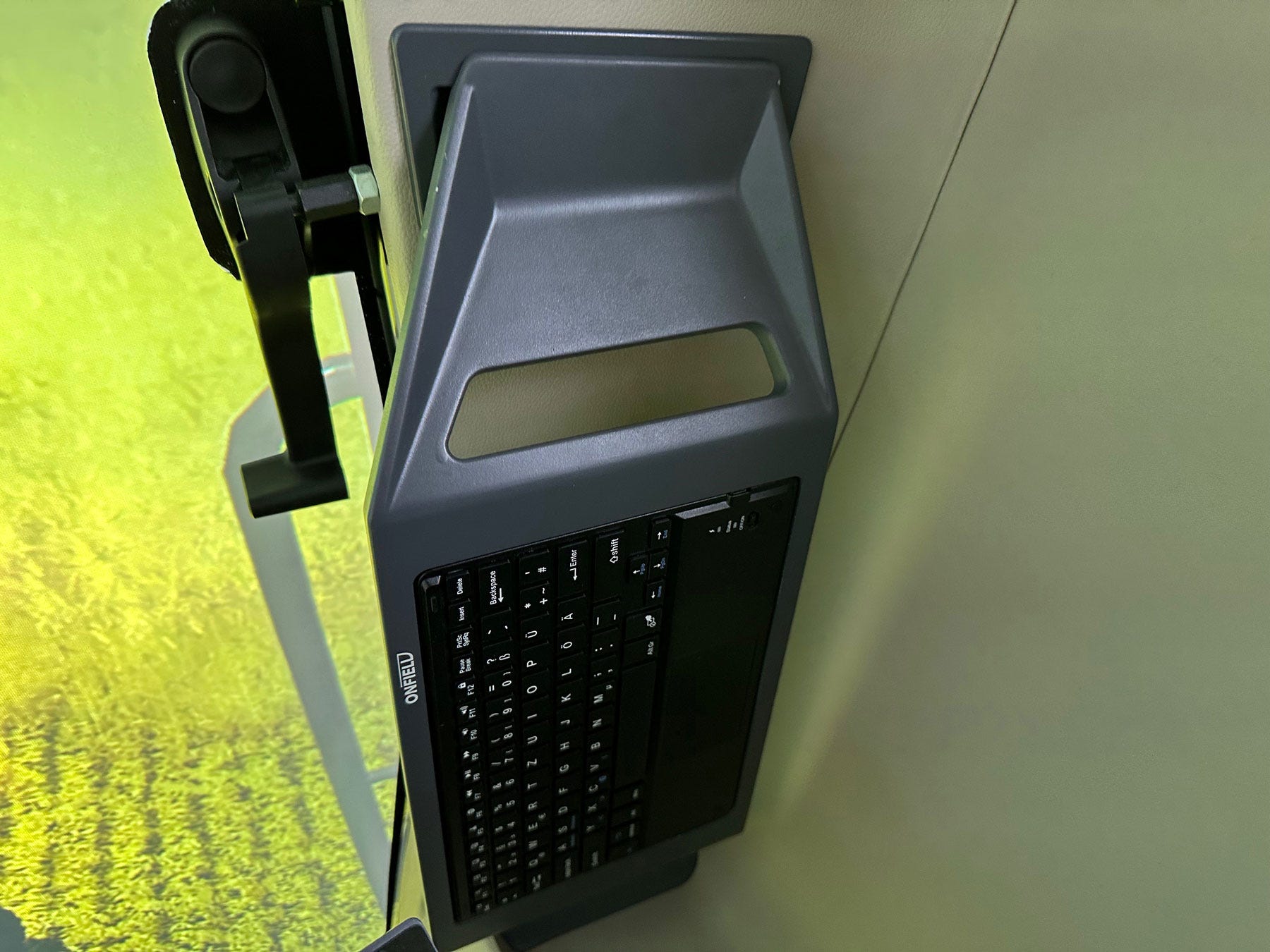November 30, 2023

At Germany’s Agritechnica 2023, companies showed new ideas and even tested out future concepts. At the Innovation Lab at the Claas exhibit, two combine cabs offered a peek at what may be in store for the future.
The Onfield Combine Cab 4.0 was part of a demonstration project. “With automation becoming more common in combines, we wanted to look at what that would mean for the operator,” says Matthias Mumme, head of specialized press for Claas. “The machine is doing more work, and the operator is on board more to monitor the system.”
The demonstration put visitors through a simulation to offer a near-real experience in the field. Then, representatives conducted a survey to gauge their impressions.
Here are a few features of the demonstration cab:
A large display is found on all three cab windows.
On the A-pillar monitor, displays input machine parameters, which can be customized by the operator.
Three displays in the headliner show machine settings and machine overviews by camera.
A left multifunction armrest provides steering via a joystick, a touch display for interaction with the virtual assistant and buttons to adjust seat modes.
A right multifunction armrest has the Claas CMotion joystick to adjust machine settings, as well as a touch display with settings to optimize threshing.
Rethinking cab
The demonstration had the normal machine monitoring tools, but the head-up displays on all three main windows offered other features. For example, the forward window puts machine information in front of the operator who can still keep eyes on the field.
But the designers had other ideas for the windows to the right and left of the operator, so the seat can turn in either direction at the touch of a button. Moving to the right, a person could initiate a screen with email and use the wireless keyboard to interact. That screen could also carry information, like market reports, from a favorite website. However, that all depends on having a strong web connection in the field.

CHECKING EMAIL: The demonstrator cab showed a monitor on the right window. As the combine goes through the field automatically, the operator can use a wireless keyboard that magnetically locks on the seat to, say, check email.
Moving to the left, the operator would find videos for relaxation or in-seat stretching to keep alert during a long day operating the machine.
Also, a virtual assistant, named Favia, is on board. The artificial intelligence system would actually monitor an operator’s stress, based on physical parameters, and reduce distractions.
For example, if Favia notes the operator is under stress, the system would recommend relaxation exercises, and other stimuli would be reduced, such as checking email. The idea is to take care of the operator.
Favia can also act as an alert, pulling the operator away from email if a system needs attention. This happened during the demonstration, with Favia calling out to the user that a system setting needed to be addressed.
Claas representatives at the exhibit acknowledged this is a demonstration of ideas, not a cab in production anytime soon. But considering the way equipment is changing, the many features offered in this demonstration show promise.
2nd version on display
A second cab of the future displayed by Claas showed more changes to the operator’s cab environment. Its right and left pillars have cameras acting as rearview mirrors. Those pillars also had monitors showing other key machine features.
Integrated monitors on the right and left armrests can give the operator more information as needed. Another display in the headliner was a full-width monitor, which could be customized by the operator to show key information as needed.

MORE IN PLAY: This cab shows other design features including cameras acting as rearview mirrors, a full-width monitor and a monitor on either armrest to tracking action during harvest.
Both demonstration cabs lacked a steering wheel and, instead, used a joystick to allow for a better view of fields.
Demonstrations like this offer a sneak peek at what engineers are thinking, but what finally shows up in a combine or tractor cab will be driven by customers. That’s the values of those surveys Claas conducted on its stand.
About the Author(s)
You May Also Like






